I feel fine: A sensory branding guide
| December 22, 2020
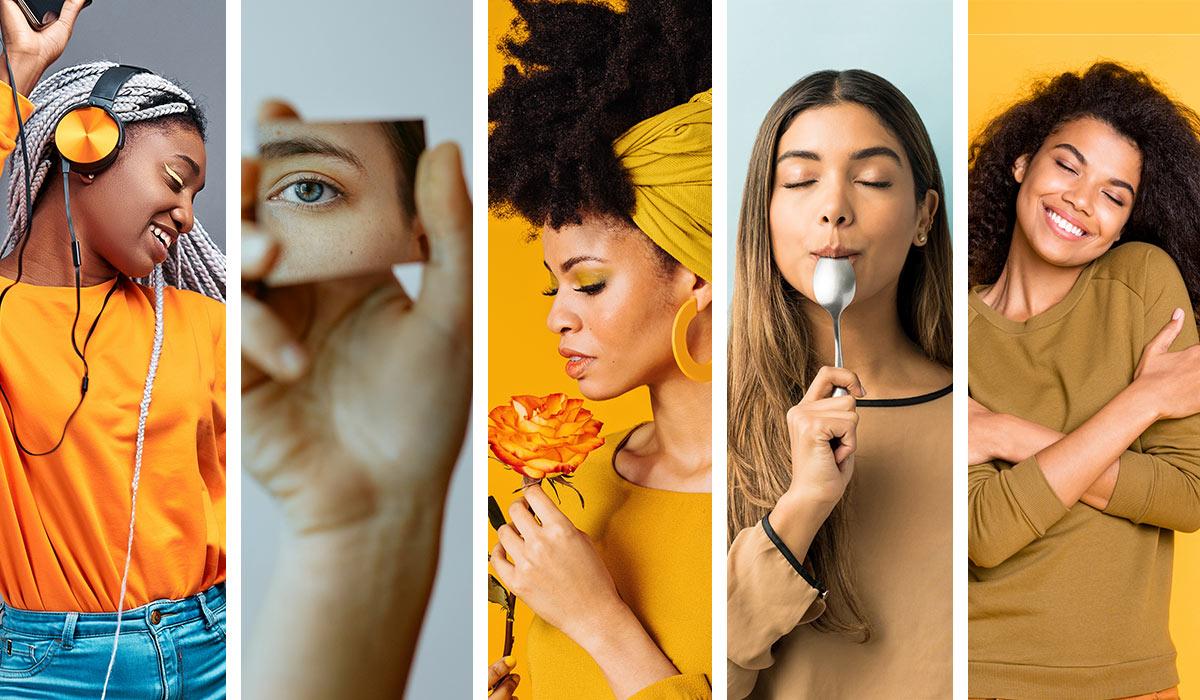
“Lose your mind and come to your senses.” – Fritz Perls
A single smell, one that we haven’t smelled in decades, can bring deeply-buried memories roaring back to us, as if we’re back in the past reliving a certain time period.
Knowing this, it becomes clear why brands are expanding their sensory branding efforts to better connect with customers.

The impact sensory branding has on customers and potential customers is massive, and can completely change how people view your brand. Let’s make sure you’re doing it right.
This article will give you some unique sensory branding strategies, as well as some examples of brands who are doing it right.
What is sensory branding?
Sensory branding is a marketing effort designed to attract customers through the use of common senses such as smell, sight and sound. It is a form of neuromarketing which appeals to customers emotionally and ties branding elements to their memories.
Without a comprehensive plan put into place, a sensory branding effort easily falls flat. Here are some key strategies to guide you.
Significant sensory branding strategies
As you likely know by now, there are more than five human senses. Even though there are basic senses, don’t restrict your branding to these alone. For example, a brand may make an effort to appeal to our sense of temperature by coordinating in-store climates. That way they can make a customer feel warm or cold, whichever they feel best represents the idea of their brand.

With this in mind, it’s still important to target the basic senses when possible. Follow these unique strategies to succeed in whichever sensory task you set out to accomplish.
Make a visual contrast
If you’ve ever seen a shooting star, you were likely amazed by the visual impact it had on you. It is, after all, a fairly rare occurrence, and it stands out in the sky. However, imagine that the sky was filled with shooting stars at every time of day – thousands of streaking stars flying across your field of vision. I’m guessing that you wouldn’t notice one particular star and appreciate its beauty.

When it comes to branding, this idea of shooting stars is highly relevant, because the senses most brands like to attack are visual. The last thing you want to do is spend a lot of resources and time creating a marketing advertisement that gets lost among the stars.
It has become imperative, then, to stand out visually. The status quo won’t have a big impact on your audience. Sometimes, the best way to stand out is to be minimal and quiet, rather than loud and intrusive. Many explosive visuals, such as colors, can stand out, but not if the entire community is going that route. Evaluate your specific industry and advertising realm and decide the best way to create differences between your visual branding and everyone else’s.
Focus on the shifting spirit of sound
If the latest advertising trends are any indicator, it seems like sound is finding a new home in the sensory branding world. As people who watched the Super Bowl a few years ago noticed, an advertisement that was quiet and used ASMR was an attempt to captivate the senses, and it ended up being a popular topic for some time after it aired.
Recurring sounds, such as jingles, are a great way to tie your brand to a customer’s memory and encourage emotional connections. On top of this, attacking the audible senses can help brands stand out in a potentially overly crowded visual advertisement scene.

In order to truly captivate using sounds, think of the ways sounds impact people and adapt your branding to appeal to this. For example, most people feel differently about a quiet sound versus a loud sound, or nails on a chalkboard versus a whispering voice. Find a happy balance that appeals to your target market.
Appeal to taste, even if you’re not in the food industry
Here’s an exercise that’s common but effective: Imagine you’re at a kitchen counter and there is a small, bright-yellow lemon in front of you, as well as a knife. Picture yourself slicing the lemon into four different pieces, seeing the juices fly out onto the surface. Now imagine taking a bite of one of the opened pieces.
Chances are you got a strong sense of the taste of a lemon, in its texture and the sour, acidic flavor it provides, despite not having actually tasted anything. This exercise shows the power of taste.

This is a difficult concept for brands to overcome, but taste can be an effective sense to target in their branding efforts, even if they’re not in the food industry. Like the lemon example above, it’s clear that taste extends beyond physically tasting a product to sample it.
Incentivize your audience with scents
“Nothing revives the past so completely as a smell that was once associated with it.” – Vladimir Nabokov
Does a brand have a distinct smell? If they adhere to sensory branding practices, they just might. In fact, their smell might be unique and bring out positive emotions in their customers.
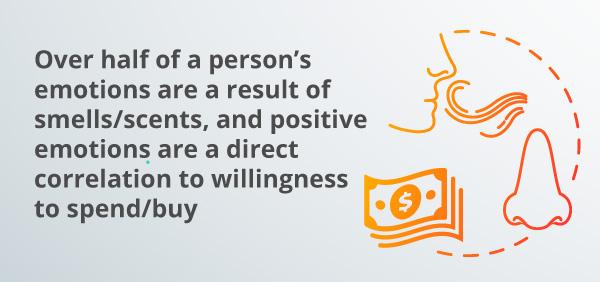
Here’s where it gets tricky. There are a lot of different smells that are similar and bring out the same feelings. For example, if two coffee brands hoped that their brand would come to mind whenever a customer smelled coffee, they’re likely going to be disappointed. This is why appealing to an audience’s smell takes some legitimate creative effort. Starbucks, for example, ensures each of their locations have an atmosphere and an aroma that extends beyond ‘coffee’.
Many brands have experimented with introducing smells into their physical locations, a trend which seems to be on the uptick, so look for ways to stand out among your competitors.
Nudge customers in the right direction with touch
“Touch comes before sight, before speech. It is the first language and the last, and it always tells the truth.” – Margaret Atwood
This is another tricky one that brands get confused in their sensory branding efforts, since there aren’t a whole lot of opportunities to target touch in campaigns. However, there are a few simple things to look out for.

First, consider the way in which your products, if applicable, feel when handled. Even if it’s just the packaging of a product, the idea should be to put a picture into the customer’s head, such as soft, gentle, professional, clean, etc.
When it comes to brands in the food industry, touch can extend to things like texture, which is crucial when it comes to food and drink. Though this overlaps with taste a bit, there is serious consideration to thinks like the texture a beverage, which can ruin a product completely if it’s even slightly off.
Stay true to your brand throughout the sensory branding process
Your brand appeals to a certain demographic, and has a specific audience it targets. Because of this, it’s important to gear your sensory branding toward that audience, keeping in mind their age, location and interests.

Also remember that your brand has built a brand image that must be upheld throughout each marketing campaign. Sensory branding is no different. Each time you make an attempt to appeal to senses, it should be within the values and confines of your brand. For example, if your brand has a very serious customer base and presents itself professionally, visually wacky advertisement would be the wrong kind of sensory branding. Stay true to your brand.
Now that you have the necessary tools to create your own sensory branding, let’s take a look at some examples of brands who successfully appealed to customer senses.
Powerful sensory branding examples
In order to see what types of things are successful and what attempts fall flat, it’s nice to have some concrete examples. Use these ideas to evaluate your own processes.
Coca-Cola
Coca-Cola has produced a wide variety of advertisements that have different unique attempts to appeal to certain customer emotions. They have certainly worked on improving their sensory branding over the years, and I feel have perfected it in their adherence to audio.
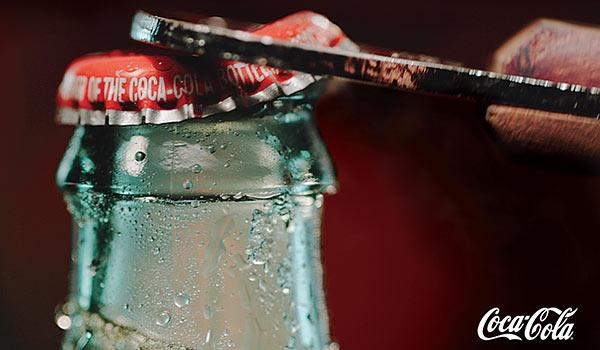
The colors of their advertisements are outshined by the simple sounds that come through in many of their ads. For example, the sound of bubbling fizz rising, or someone exhaling gently after taking a drink of Coke.
However, most notable to the senses is the opening of a Coke bottle. Notice how Coca-Cola doesn’t choose to have the opening of their cans in ads? This is because it’s just not as appealing. This shows an expert level of dedication to sensory branding.
Apple
There are actually quite a few things Apple targets in their sensory branding, but I think the one that stands out is their approach to the visual side of things. It’s not just the solidarity of their products visually that stands out to customers, but the feeling of a futuristic, ‘clean’ brand.
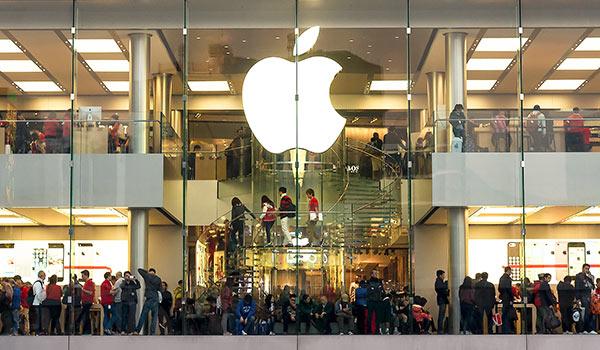
For example, their physical stores are designed to be transparent from the outside looking in and vice versa, they’re very open without shelves blocking off one person from the next, and the walls are white without distracting images or posters everywhere. This is the kind of thing that overwhelms the sense of sight effectively and in a positive way. Other brands have even attempted to emulate Apple’s sensory branding approach in this manner.
McDonald’s
Mcdonalds has dabbled in sensory branding quite a few different times now, with strategies designed to captivate customer emotions and serve as reminders of what the brand stands for. It’s worth pointing out the effectiveness of the ‘I’m Lovin’ it’ jingle as a way to use audio to connect with customers.
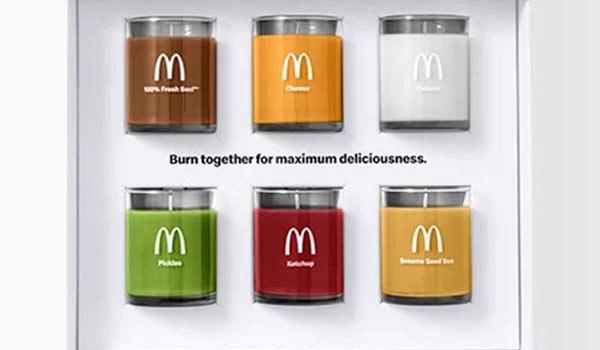
However, the sense they targeted most successfully in their branding is smell. Now, you may think that this has to do with the natural smell of their locations, thanks to their food, but that’s not really a result of direct sensory branding. What I’m referring to is their McDonald’s scented candles campaign, which allowed users to buy candles that gave off the McDonald’s aromas when lit. These are the kinds of ideas that need to be considered when trying to stand out with sensory branding.
Spark your own sensory transformation
Sensory branding brings out the best moods in customers, which encourages sales, but only when the process is handled correctly. Each time our market interacts with our brand, we want the experience to be memorable, and sensory branding gives us that chance.
Take a few creative risks and make a commitment to boost the emotional effectiveness of your brand. Chances are, the success you seek is just a sense away. Good luck!
For more branding information, check out my complete branding guide.
